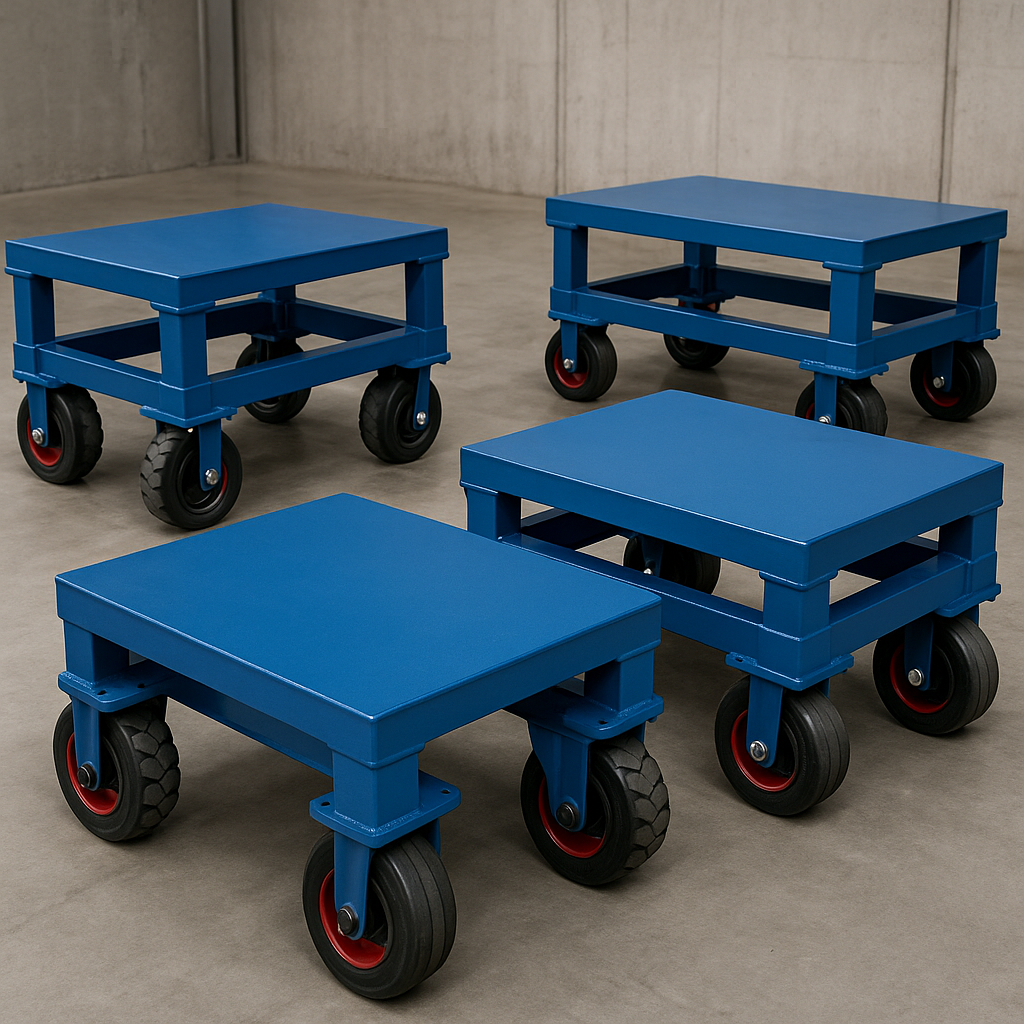In fast-paced industrial settings, efficient transport and organization of materials can directly influence productivity and safety. This is where heavy duty material handling carts come into play. Designed to support large loads and frequent usage, these carts are vital to keeping operations smooth, safe, and scalable.
In this blog, we’ll explore the key advantages of investing in custom heavy duty material handling carts from increased durability to better integration with automated systems. Whether you're managing a warehouse, production line, or distribution facility, understanding how these carts can be tailored to your specific needs will help you make smarter, more cost-effective decisions.
Why Customization Matters in Material Handling
Not all facilities have the same workflows or spatial constraints. That’s why off-the-shelf carts often fall short when it comes to optimizing performance. Custom industrial material handling carts are designed to meet the unique demands of your operation whether that means handling extra-large loads, fitting into tight aisles, or incorporating specialized features like lift mechanisms or compartments.
With customization, you gain:
- Greater safety and stability for oversized or irregular items
- Reduced downtime from equipment mismatches
- Improved flow of materials throughout the facility
- Long-term ROI through enhanced durability and usability
Key Features of Heavy Duty Material Handling Carts
Built for Strength and Stability
A true heavy duty equipment cart is engineered for strength. These carts typically use:
- Reinforced steel or aluminum frames
- Industrial-grade caster wheels for smooth maneuverability
- Load capacities ranging from 1,000 to over 10,000 pounds
This construction ensures longevity and dependability in demanding environments.
Ergonomic Design Enhances Operator Safety
Poorly designed carts can contribute to strain and workplace injury. By customizing the height, handle placement, and wheel configuration, you improve ergonomics—leading to safer, more comfortable operations.
Versatile Configurations
Custom material carts can be tailored to fit:
- Shelving units
- Tilt and lift capabilities
- Lockable storage compartments
- Integrated power or tool trays
Such versatility is crucial for assembly lines, order picking, or maintenance workflows.
Electric Options for Increased Efficiency
As operations scale, so does the need for automation and power-assist. That’s where electric material handling carts and electric warehouse carts come in. These battery-powered carts reduce manual labor, minimize injury risk, and improve material movement speed.
Benefits of electric carts include:
- Push-button control or joystick navigation
- Battery systems designed for long shifts
- Reduced physical strain on workers
- Integration with existing warehouse carts material handling equipment
They’re ideal for industries like automotive, aerospace, and logistics where precision and safety are critical.
Industry Applications for Heavy Duty Carts
Warehousing and Distribution
In warehouses, material carts heavy duty models help move pallets, bins, and tools across long distances with minimal strain. Paired with an electric material handling cart, they boost picking efficiency and reduce turnaround time.
Manufacturing and Assembly
On the shop floor, industrial heavy duty carts are used to stage parts, move unfinished products between stations, or hold tools and fixtures. These carts are often designed for compatibility with conveyor systems or robotic arms.
Aerospace and Defense
Here, carts must meet strict load and material handling requirements. Heavy duty material handling carts used in this sector are often customized with anti-static features, tool integration, and precise weight distribution systems.
Comparing Manual vs. Electric Material Handling Carts
While manual material handling carts are often sufficient for light-duty applications, electric warehouse carts are a better fit for heavier loads and longer travel distances. Electric options offer improved efficiency, reduce labor costs, and provide safer material transport over time.
The key is evaluating your load weights, frequency of use, and required speed of transport. A warehouse cart electric model may cost more upfront, but the labor savings often justify the investment within months.
Choosing the Right Cart for Your Facility
Before selecting a cart, consider:
- Load type and size
- Operating environment (indoor, outdoor, cleanroom, etc.)
- Required mobility (stationary, mobile, electric-powered)
- Integration with other material handling equipment
- Storage, access, and ergonomic needs
Working with a vendor who specializes in custom industrial carts ensures that every detail—from caster strength to shelving layout—is tailored for your workflow.
Frequently Asked Questions (FAQ)
Q1: What’s the difference between heavy duty material handling carts and standard carts?
A: Heavy duty material handling carts are designed to carry significantly higher loads and withstand constant use in industrial environments. They use stronger materials and are often customizable.
Q2: Are electric material handling carts suitable for small warehouses?
A: Yes. Electric material handling carts are ideal for small to mid-sized facilities where space is limited but load transport is frequent. They enhance safety and reduce fatigue.
Q3: Can I customize a cart to include power outlets or tool holders?
A: Absolutely. Many vendors offer full customization, including power integration, shelving, tool mounts, and even digital tracking for inventory purposes.
Conclusion
From warehousing to manufacturing, custom heavy duty material handling carts provide a reliable, scalable solution for transporting materials efficiently and safely. By tailoring carts to meet your specific requirements whether manual or electric you unlock greater productivity, reduce workplace risk, and maximize the lifespan of your equipment.






Comments